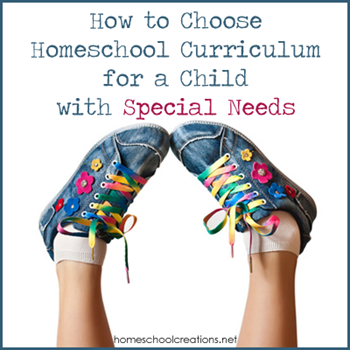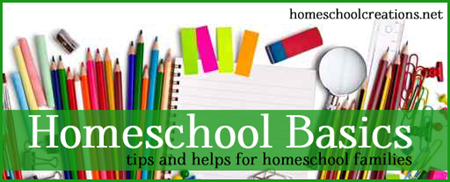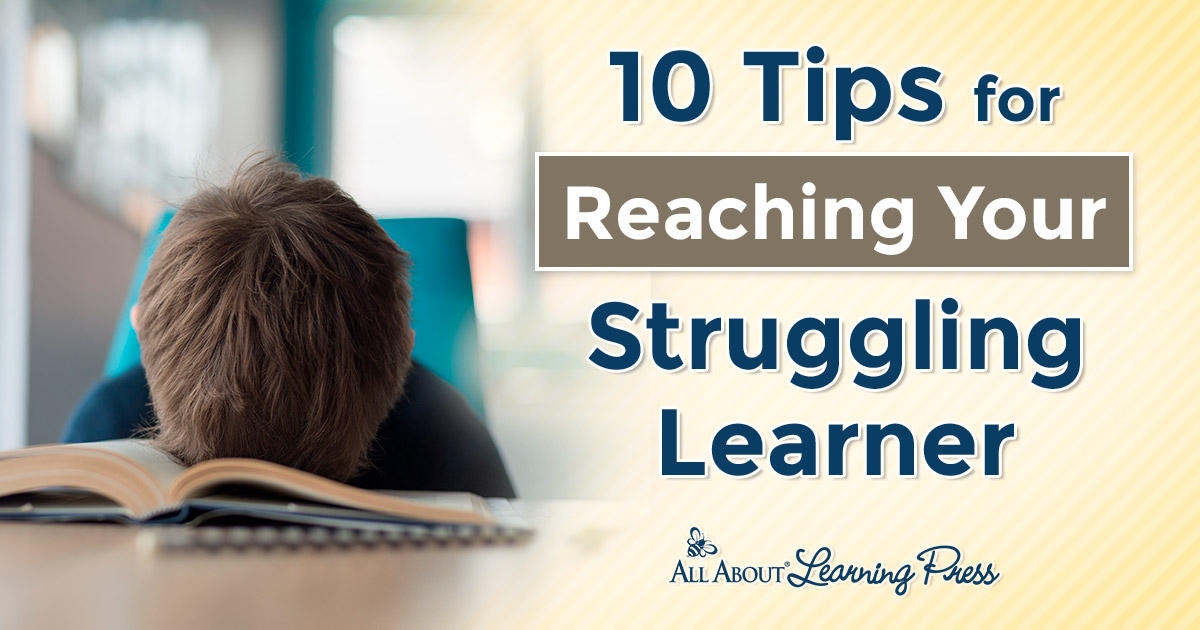- Like
- Digg
- Del
- Tumblr
- VKontakte
- Buffer
- Love This
- Odnoklassniki
- Meneame
- Blogger
- Amazon
- Yahoo Mail
- Gmail
- AOL
- Newsvine
- HackerNews
- Evernote
- MySpace
- Mail.ru
- Viadeo
- Line
- Comments
- Yummly
- SMS
- Viber
- Telegram
- Subscribe
- Skype
- Facebook Messenger
- Kakao
- LiveJournal
- Yammer
- Edgar
- Fintel
- Mix
- Instapaper
- Copy Link
As a former special education teacher, children with special needs are very dear to my heart. Today I am excited to have Kathy Kuhl, author of Homeschooling Your Struggling Learner, share her insight and advice to families on choosing homeschool curriculum for a child with special needs.


Choosing Curriculum for a Child with Special Needs
Folks often ask me to recommend homeschool curriculum for their child with special needs. But it’s like asking me to recommend shoes. I have questions: what size, width, and activity? Any color they can’t stand? What have they tried and how did that work—or not?
Every child is unique, but here are my steps to shopping for curriculum.
1. Study your child first, and make a short list.
With a child with special needs, we parents are tempted to focus on weaknesses in basic skills and academics. List them, but also notice strengths. Passing math or spelling is something to celebrate! Being able to explain 27 kinds of horses, rocks, or locomotives is a strength—even if you hear way too much about it. Note those passions. If your child loves music, drawing, storytelling, or talking to people—even if they aren’t good at it yet—write that down.
Build your plans around their passions, strengths, and weaknesses. When you’ve got that written (keep it short), you are ready to:
2. Set goals for the year.
-
Not too many. One friend showed me her goals for 3 months. But I couldn’t do them in a year. You might hire a special education consultant to help you be realistic.
-
Don’t neglect basic life skills, whether it’s learning to wash hands, fix dinner, balance a checkbook, or deal with a disagreement with a friend. If the child is doing something that drives you crazy, like not putting away shoes, even that is a candidate for your list.
3. Network with other families.
Now that you know what you want to focus on, ask friends with kids with similar issues what they use. Don’t know anyone homeschooling a child like yours? Join Yahoo lists and online forums. Search the groups’ archives, in case someone asked your question last year.
If you aren’t on any Yahoo lists yet, search Yahoo groups for “homeschool” plus whatever special needs you are working with; e.g. “homeschool deaf,” “homeschool dyslexic” and also more general lists, like “homeschool special needs.”
4. Get a hands-on look at curriculum.
If you can go to a homeschool convention, go. Handling the materials, you learn things a catalog or website won’t tell. How big is the type and spacing? How colorful? How many practice problems? Are there alternate versions of quizzes and tests? (Some of us need second and third chances.) Talk to the representatives—many know plenty.
Remember, these are often small businesses and homeschool families, so support them by purchasing from them. If you need time to go home and think, ask if they’ll extend that convention discount a week.
5. Watch for bargains.
Sometimes you’ll find something marvelous that doesn’t fit your plans. Perhaps you had other plans for science, but then you saw something you know your child would love. Does it fit your larger goals?

Image courtesy of Kathy Kuhl
Last month I was looking for a pair of ivory pumps. I never imagined I’d buy pink slings. But I saw a cute, well-made pair, marked down. I realized they fit my wardrobe. I changed my plan, but kept to my goal, and kept under budget.
By studying your child, setting goals, networking, handling the merchandise, and thinking creatively when you find unexpected bargains, you can turn the chore of shopping for curriculum, into—if not fun, at least a satisfying shopping experience.
Kathy Kuhl, the author of Homeschooling Your Struggling Learner, helps parents help kids who are gifted, discouraged, challenged – or all three. Kathy is a veteran homeschool mom and former classroom teacher. Visit LearnDifferently.com to sign up for her newsletter and find great resources.
This post is a part of the Homeschool Basics series. Be sure to read the other posts if you are just joining in. For the record, I am not an expert. I’m a homeschool mom who is sharing what she’s learned so far along the way with her own family.









 The printables shared on this site are FREE of charge unless otherwise noted, and you are welcome to download them for your personal and/or classroom use only. However, free or purchased printables are NOT to be reproduced, hosted, sold, shared, or stored on any other website or electronic retrieval system (such as Scribd or Google docs). My printables are copyright protected and I appreciate your help in keeping them that way.
If you download and use some of my printables and then blog about them, please provide a link back to my blog and let me know - I'd love to see how you are using them! Please be sure to link to the blog post or web page and not directly to the file itself. Thank you!
The printables shared on this site are FREE of charge unless otherwise noted, and you are welcome to download them for your personal and/or classroom use only. However, free or purchased printables are NOT to be reproduced, hosted, sold, shared, or stored on any other website or electronic retrieval system (such as Scribd or Google docs). My printables are copyright protected and I appreciate your help in keeping them that way.
If you download and use some of my printables and then blog about them, please provide a link back to my blog and let me know - I'd love to see how you are using them! Please be sure to link to the blog post or web page and not directly to the file itself. Thank you!
Good tips, and thanks for including this post here, Jolanthe. I was to glad to have met Kathy briefly at the 2:1 Conference last spring.
Good to meet you, too, Caroline.
I homeschool my youngest daughter who has Down syndrome and I appreciate this post and the links that you shared. I look forward to reading more from Kathy and I’m going to check out her book!
http://twilsonismakingthemostoftoday.blogspot.com/
I loved reading this. I’ve been trying to incorporate what my daughter loves (music) into our learning but as of yet cannot think of a way to do so with things like math and reading. Any suggestions?
Jennifer, thanks for your comment and
great question.
Math and music are both all about pattern and creativity (though
you may not see it the day you first sit down to teach long
division!) What works depends on your child’s strengths and
tastes. Skip-counting songs and songs to learn math facts help
some children learn. Google “Math facts songs” to see which
appeals to your child. I bought one that drove me crazy because
the singers were continually squeezing extra syllables into a
beat–but your daughter may not mind that.
Math songs can go way beyond simple arithmetic. When I teach the
quadratic formula to our homeschool group’s algebra students, I
sing it to the tune of Pop Goes the Weasel:
“X is equal to negative b,
Plus or minus the square root,
Of b squared minus 4ac,
All over 2a.”
Carol Barnier, author of Ditty Bugs: 50 powerful memory rhymes
that will lock in learning for your students, taught me this
one:
“To multiply two fractions, it’s easy if you’ve got’em,
Just multiply the top, then multiply the bottom.”
For beginning reading, there are several curricula that
incorporate song, including Joyce Herzog’s Scaredy Cat reading
system and Sing, Spell, Read, and Write. Of course,
not knowing your child’s age or needs, I can’t say which reading
program would be best for her–maybe neither of these.
For any reader, incorporate that passion for music into reading by
reading about music. Your read-alouds and read-alongs (as she
reads silently along with you or with a recording) should include
stories that tie into music: Karla Kuskin’s The Philharmonic
Gets Dressed, biographies of composers, Peter and the
Wolf, Mozart’s Magic Flute, maybe even Lemony
Snicket’s wacky tour through the orchestra, The Composer Is
Dead, a mock detective story. Many of these come with a CD.
Older students can research their favorite performers,
instruments, and composers.
Kathy Kuhl
LearnDifferently.com
Thank you so much. I appreciate all your help so much! Considering that I’m pretty new to homeschooling I appreciate all the help I can get. :) Have a blessed day.
Thanks for this article. I am a mother of an 18 year old with autism. He went to Christian School but I worked with them to differentiate the curriculum. Now I have a business helping families with their children’s learning difference. I have several home schooling clients. Thanks so much for your tips.
Ruth, I’m sorry I didn’t reply sooner. If you’re helping homeschoolers, you’ll find my first book, Homeschooling Your Struggling Learner, to be a valuable resource. 26 of the 64 families I interviewed for the book are on the autism spectrum, the rest had other learning disabilities. You’ll find it at LearnDifferently.com and on Amazon.
So glad it was helpful, Tara. :)
Best and detailed advice I have found so far. Only thing missing is classifications under special needs. I found the information below on another site. Helped me categorize my boy under speech and language and impairment at least.
This includes students who have a disability in any of these thirteen categories: autism, deaf-blindness, emotional disturbance, hearing impairment (including deafness), mental retardation, multiple disabilities, orthopedic impairment, other health impairment, specific learning disability, speech or language impairment, traumatic brain injury, and visual impairment (including blindness)
Thanks for sharing. There is definitely a huge range of developmental delays and special needs.
I have been homeschooling my children and blogs like these are really helpful. Keep sharing such a great blog.